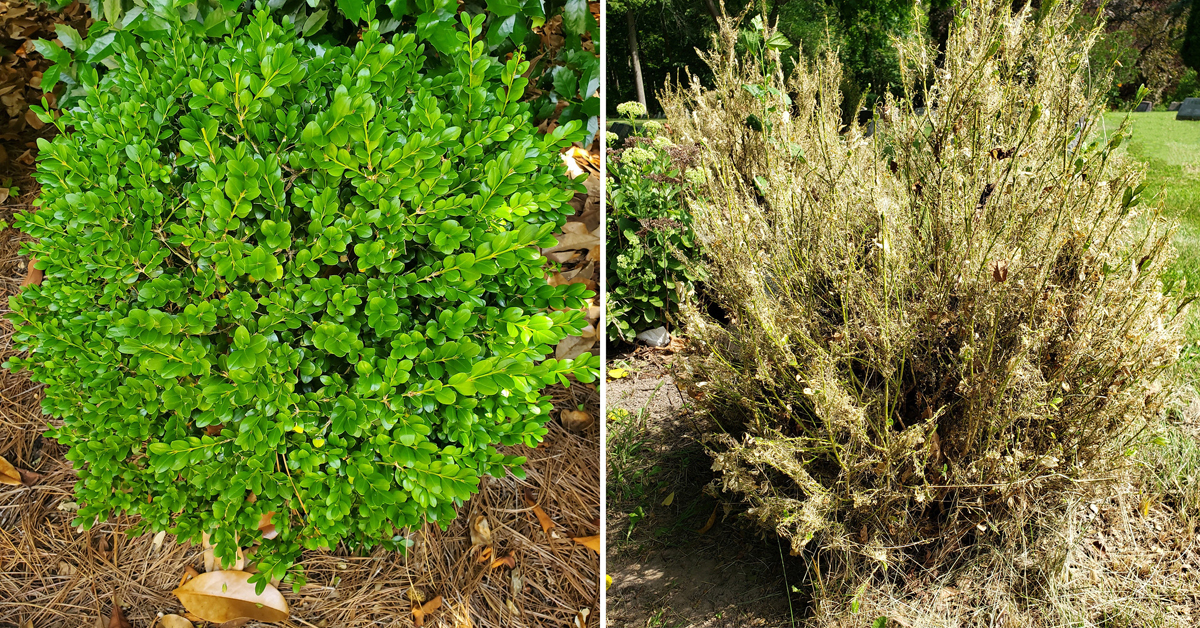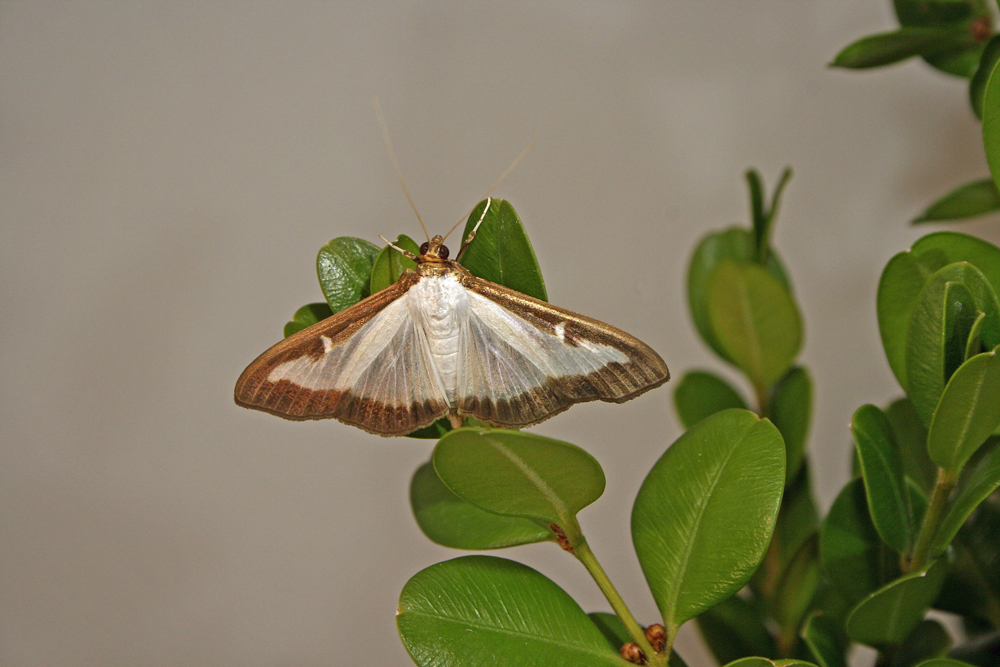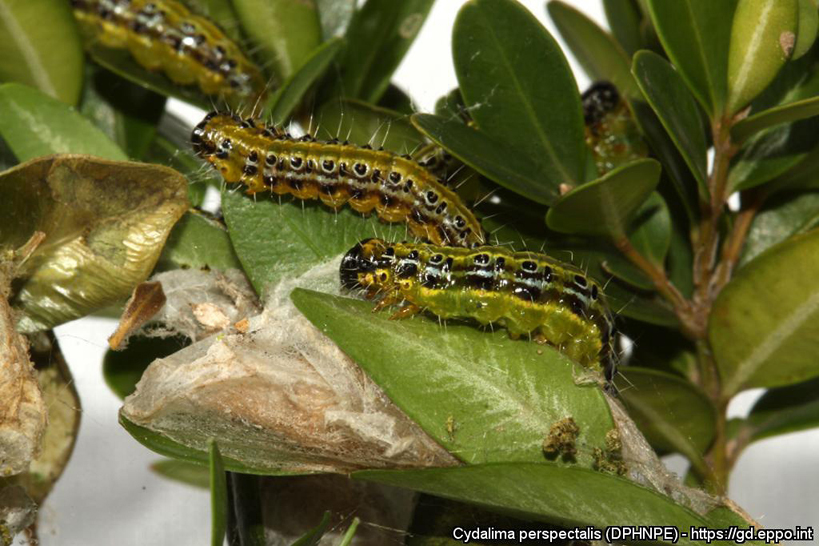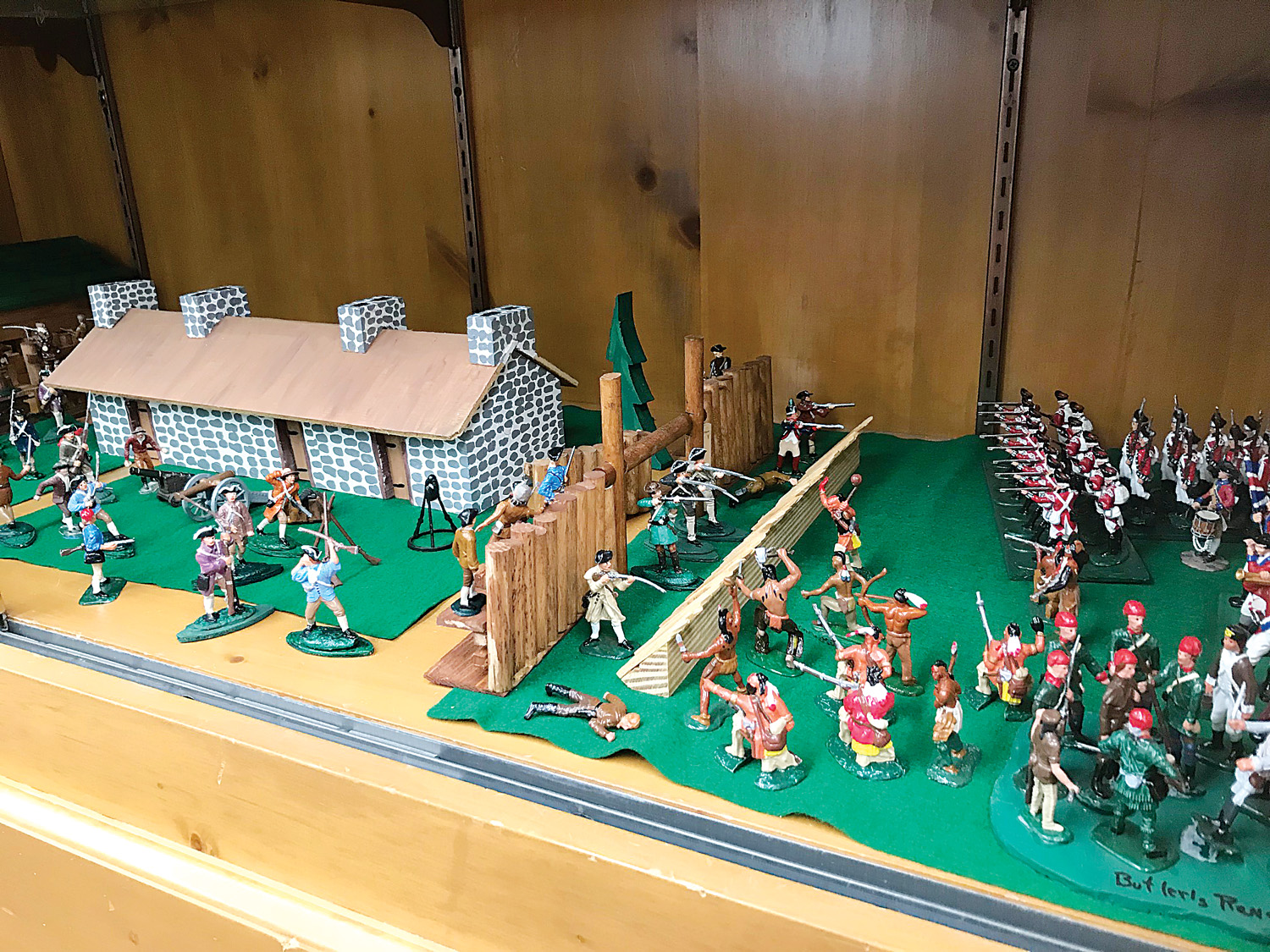Residents along Lake Ontario asked to report Box Tree Moth

The New York State Department of Agriculture and Markets recently announced additional findings of the Box Tree Moth, an invasive pest. The Box Tree Moth is a major threat to boxwood plants, which are a valuable portion of the nursery and horticultural industry. Previously, Box Tree Moth was found in Niagara County, near the Canadian border. The new finds, several of which were reported by area residents, have prompted the Department to increase its survey and trapping along Lake Ontario. Residents are urged to report any additional sightings, which will help inspectors to assess impacted areas and reduce the spread of Box Tree Moth in New York State.
As part of the state’s response efforts, inspectors from the Department plan to visit residential properties along Lake Ontario in Cayuga, Oswego, and Jefferson counties, with the landowner’s permission, to place traps for Box Tree Moth. The Department is also urging homeowners to look for signs of Box Tree Moth infestation on their property, listed below. If Box Tree Moth is suspected, the Department is asking that residents report it here: https://agriculture.ny.gov/reportBTM.
The Department also has a quarantine in place to manage the spread of Box Tree Moth, which includes Niagara, Erie, and Orleans counties. The quarantine prohibits the sale and movement of boxwood to areas outside of the quarantine area and requires companies selling boxwood to maintain sales records for inspection by the Department’s Horticultural Inspectors. The Department will revise the quarantine as necessary, depending on the outcome of its continued survey work.
In addition, the Department has been working closely with the United States Department of Agriculture (USDA) Animal and Plant Health Inspection Service (APHIS) on the management of Box Tree Moth, with USDA staff trapping for Box Tree Moth at the leading edge of the quarantine.

U.S. Department of Agriculture National Policy Manager Allen Proxmire said, “Residents can help prevent the Box Tree Moth from spreading. Please allow state or federal agricultural officials to inspect your boxwoods and place an insect trap if they visit your property. If you have boxwoods, please inspect them for signs of Box Tree Moth and once you report it, treat or trim the plant to save it because a Box Tree Moth infestation is lethal to the plant.”
Property owners and managers looking for information on managing Box Tree Moth infestations can contact their local Cornell Cooperative Extension office or visit the NYS Integrated Pest Management website at https://cals.cornell.edu/new-york-state-integrated-pest-management/outreach-education/fact-sheets/box-tree-moth.
Box Tree Moth larvae are easily recognizable; they are green and yellow with white, yellow, and black stripes and black spots. Signs of damage may not appear at the beginning of an infestation because young larvae hide among twigs and leaves. Signs of a Box Tree Moth feeding on a plant include chewed, cut, or missing leaves, yellowing or brown leaves, white webbing, and green-black excrement on or around the plant. Larvae skeletonize the leaves and feed on the bark, causing defoliation and dryness, eventually leading to the plant’s death.
Adult Box Tree Moths generally have white bodies with a brown head and abdomen. Their wings are white and slightly iridescent, with an irregular thick brown border. Some adults have completely brown wings with a small white streak on each forewing. Males and females can show both colorations.
More information on Box Tree Moth is available on the Department’s website: https://agriculture.ny.gov/plant-industry/box-tree-moth.
Provided information






